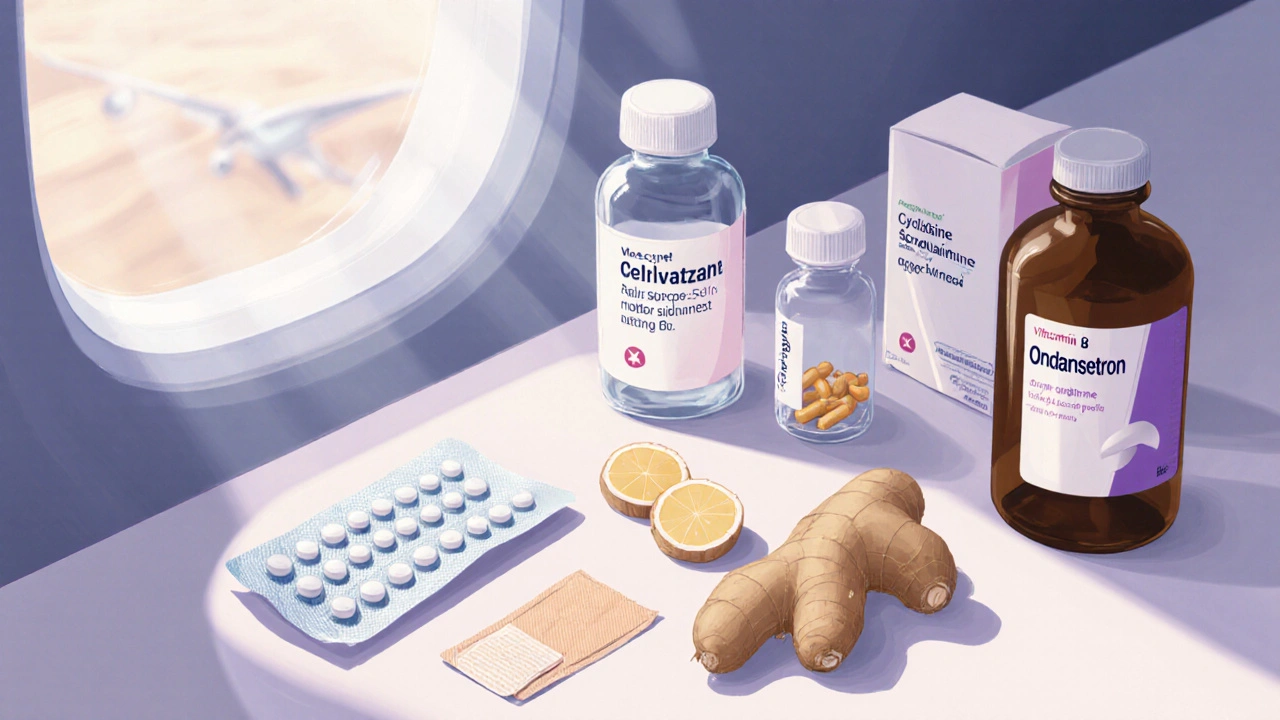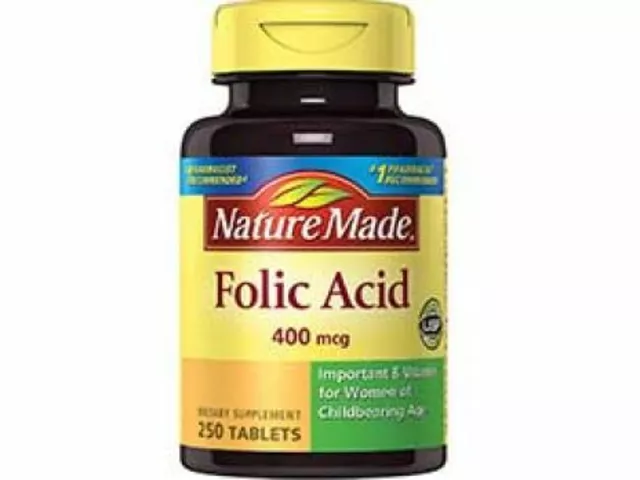Motion Sickness Relief Selector
Recommended Motion Sickness Relief
| Medication | Onset | Duration | Sedation Level | Best For |
|---|---|---|---|---|
| Dramamine | 30 min | 4–6 hrs | High | Short trips, quick relief |
| Meclizine | 1 hr | 24 hrs | Low | Multi-day travel, low sedation |
| Cyclizine | 30 min | 8 hrs | Medium | Mid-length trips, budget-friendly |
| Scopolamine Patch | 1–2 hrs | 72 hrs | Low | Long cruises, road trips |
| Ginger | 45 min | 4–6 hrs | None | Mild cases, pregnancy-friendly |
| Vitamin B6 | 1 hr | 6–8 hrs | None | Pregnant travelers, low-risk users |
Quick Takeaways
- Dramamine (dimedhydrinate) works fast but can cause drowsiness.
- Meclizine and cyclizine offer longer relief with less sedation.
- Scopolamine patches are great for prolonged travel but need prescription.
- Natural options like ginger and vitamin B6 are milder and safe for most people.
- Prescription anti‑nausea drugs such as ondansetron reserve for severe cases.
Feeling queasy on a boat, plane, or even a winding road? You’re not alone. Motion‑sickness medicines have been around for decades, but the market is crowded with both synthetic drugs and natural remedies. This guide breaks down Dramamine alternatives so you can pick the one that matches your travel style, health needs, and tolerance for side effects.
What is Dramamine?
Dramamine is a brand name for dimenhydrinate, an antihistamine that blocks signals in the brain’s vomiting center. It’s been sold over the counter in tablets, chewables, and liquid forms since the 1940s. Typical adult dosing is 50mg every 4-6hours, not to exceed 400mg per day. The drug starts working within 30minutes, peaks at about an hour, and lasts up to six hours.
Common side effects include drowsiness, dry mouth, and blurred vision. Because it crosses the blood‑brain barrier, it can impair coordination-so avoid driving or operating heavy machinery after a dose. For most travelers, the trade‑off is worth the quick relief, but the sedation can be a deal‑breaker for those who need to stay alert.

Common Alternatives - Quick Rundown
Meclizine is a second‑generation antihistamine that blocks the same receptors as dimenhydrinate but is less likely to cause drowsiness. It’s sold as Bonine or Antivert and comes in 25mg tablets. Onset is slower (about 1hour) but the effect can last 24hours, making it ideal for multi‑day trips.
Cyclizine is another first‑generation antihistamine, often found in the brand Travatan. It works similarly to dimenhydrinate, with a 30‑minute onset and an 8‑hour duration. Some users report less sedation than Dramamine, though individual response varies.
Scopolamine is a prescription anticholinergic delivered via a behind‑the‑ear patch. The patch releases medication steadily over 72hours, covering long journeys like cruises or road trips. It can cause dry mouth and blurred vision, but it rarely induces sleepiness.
Ginger is a botanical root that has been used for nausea for centuries. Fresh ginger, capsules, or ginger‑chews provide a mild anti‑nausea effect without sedation. Scientific reviews in 2023 reported a 30‑40% reduction in motion‑sickness scores compared with placebo.
Vitamin B6 (pyridoxine) helps the nervous system process neurotransmitters that trigger nausea. Doses of 25-50mg taken before travel can lessen seasickness for many people, especially pregnant women who need to avoid antihistamines.
Ondansetron is a serotonin‑5‑HT3 receptor antagonist usually prescribed for chemotherapy‑induced nausea. It’s taken as a 4‑mg tablet or injectable and works within 15minutes. Because it’s prescription‑only and costly, it’s reserved for severe or refractory motion sickness.
Promethazine is a prescription antihistamine with strong anti‑emetic properties. Often used in emergency settings, it can cause significant drowsiness and is not recommended for routine travel use unless medically supervised.
Side‑by‑Side Comparison
| Medication | Active Ingredient | OTC / Prescription | Onset | Duration | Typical Side Effects | Best For |
|---|---|---|---|---|---|---|
| Dramamine | Dimenhydrinate | OTC | 30min | 4-6hrs | Drowsiness, dry mouth | Short trips, quick relief |
| Meclizine | Meclizine hydrochloride | OTC | 1hr | 24hrs | Mild sedation, headache | Multi‑day travel, low sedation need |
| Cyclizine | Cyclizine hydrochloride | OTC | 30min | 8hrs | Drowsiness, constipation | Mid‑length trips, budget‑friendly |
| Scopolamine Patch | Scopolamine hydrobromide | Prescription | 1‑2hrs | 72hrs (continuous) | Dry mouth, blurred vision | Long cruises, road trips |
| Ginger | Zingiber officinale root | OTC (food supplement) | 45min | 4‑6hrs | Heartburn (high doses) | Mild cases, pregnancy‑friendly |
| Vitamin B6 | Pyridoxine | OTC (supplement) | 1hr | 6‑8hrs | Rare neuropathy at very high doses | Pregnant travelers, low‑risk users |
| Ondansetron | Ondansetron hydrochloride | Prescription | 15min | 4‑6hrs | Headache, constipation | Severe or refractory motion sickness |
| Promethazine | Promethazine hydrochloride | Prescription | 30min | 4‑6hrs | Strong sedation, respiratory depression (high doses) | Emergency or medically supervised use |
How to Choose the Right Option
Start by asking yourself three questions:
- How long is my trip? Short hops (under 6hrs) favor fast‑acting tablets like Dramamine. Multi‑day voyages benefit from meclizine or a scopolamine patch.
- Do I need to stay alert? If you’ll be driving, piloting, or operating machinery, pick a low‑sedation drug (meclizine, cyclizine) or a non‑drug option (ginger, B6).
- Am I pregnant, nursing, or on other meds? Natural alternatives and vitamin B6 have the cleanest safety profile, while prescription anti‑emetics require a doctor’s sign‑off.
Another practical tip: test a small dose at home before the actual journey. That way you know how your body reacts and can avoid surprise drowsiness on the plane.

Safe Use Tips & Interactions
- Avoid alcohol with any antihistamine‑based product - the combo multiplies sedation.
- Don’t mix two antihistamines (e.g., Dramamine + meclizine). The extra dose won’t boost effectiveness but will increase side effects.
- Consult a pharmacist if you’re on blood‑pressure meds, antidepressants, or seizure drugs; many anti‑emetics can alter their levels.
- For scopolamine patches, apply to clean, dry skin behind the ear at least 4hours before travel. Rotate the site if you need a second patch later.
- Pregnant travelers should stick to ginger (up to 1g daily) or vitamin B6 - both have strong safety data in pregnancy.
When to Seek Professional Help
If nausea persists beyond 24hours, is accompanied by vomiting, severe headache, or fever, see a doctor. Persistent symptoms could signal inner‑ear disorders, infection, or a need for prescription‑strength medication like ondansetron.
Frequently Asked Questions
Can I take Dramamine and alcohol together?
No. Combining alcohol with dimenhydrinate intensifies drowsiness and can impair coordination, making it unsafe to drive or operate machinery.
Is ginger as effective as medication for motion sickness?
Ginger provides mild relief and works well for low‑to‑moderate symptoms, especially in pregnant women or those who avoid pharmaceuticals. It won’t match the rapid, strong effect of antihistamines for severe cases.
How long does a scopolamine patch last?
A single patch releases scopolamine continuously for up to 72hours, covering most long trips without needing re‑dosing.
Can I use meclizine for nausea caused by a stomach bug?
Meclizine is designed for vestibular (inner‑ear) nausea, not gastrointestinal infections. For a stomach bug, rehydration and, if needed, prescription anti‑emetics are more appropriate.
Are there any long‑term risks with regular use of dimenhydrinate?
Occasional use is safe, but chronic daily intake can lead to tolerance, dependence, and persistent dry mouth or blurred vision. Talk to a healthcare professional if you need it more than a few times a month.





Comments (13)